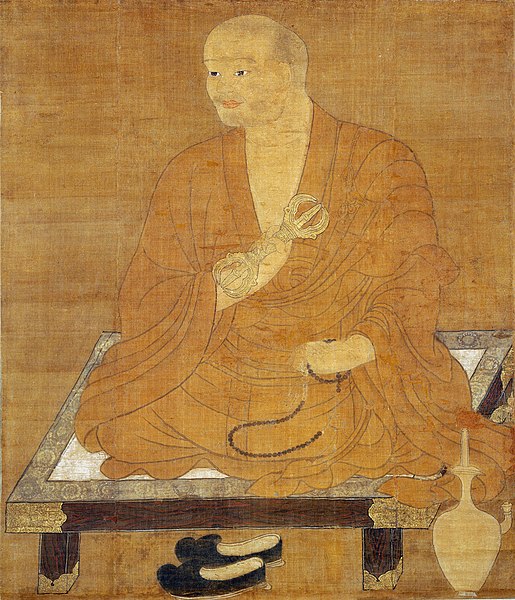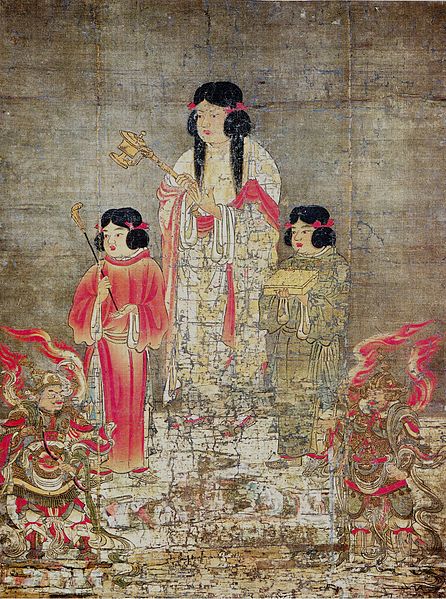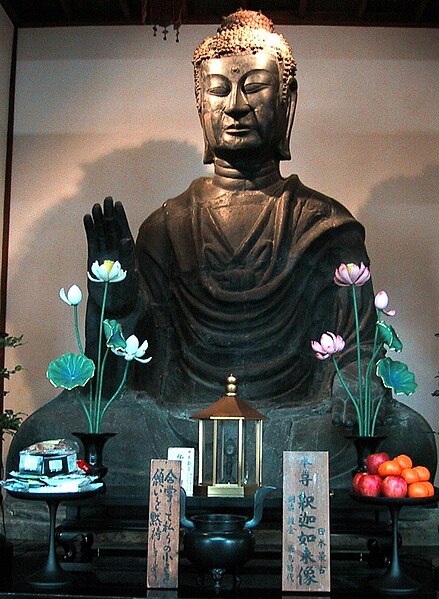Shingon is one of the major schools of Buddhism in Japan and one of the few surviving Vajrayana lineages in East Asian Buddhism. It is sometimes also called Japanese Esoteric Buddhism, or Eastern Esotericism. The word shingon is the Japanese reading of the Chinese word 真言, which is the translation of the Sanskrit word mantra.
Danjō garan of Kongōbu-ji, the head temple of the Kōyasan sect based in Mount Kōya
Painting of Kūkai from a set of scrolls depicting the first eight patriarchs of the Shingon school. Japan, Kamakura period (13th–14th centuries).
Jingo-ji, on Mount Takao, the first major temple in which Kūkai worked on his return to Japan
Shingon monks at Mount Koya
Buddhism in Japan was first established in the 6th century CE. Most of the Japanese Buddhists belong to new schools of Buddhism which were established in the Kamakura period (1185-1333). During the Edo (Tokugawa)-period (1603–1868), Buddhism was controlled by the feudal Shogunate. The Meiji-period (1868–1912) saw a strong response against Buddhism, with persecution and a forced separation between Buddhism and Shinto.
The Great Buddha (Amida) (Daibutsu) at Kōtoku-in, Kamakura, in Kanagawa Prefecture, Japan (National Treasure)
Painting on silk of the semi-legendary Prince Shōtoku, first major sponsor of Buddhism in Japan
The Great Buddha of Asuka-dera, oldest Buddha statue in Japan, and an example of the Tori style
The Yumedono Kannon, another example of Tori style








